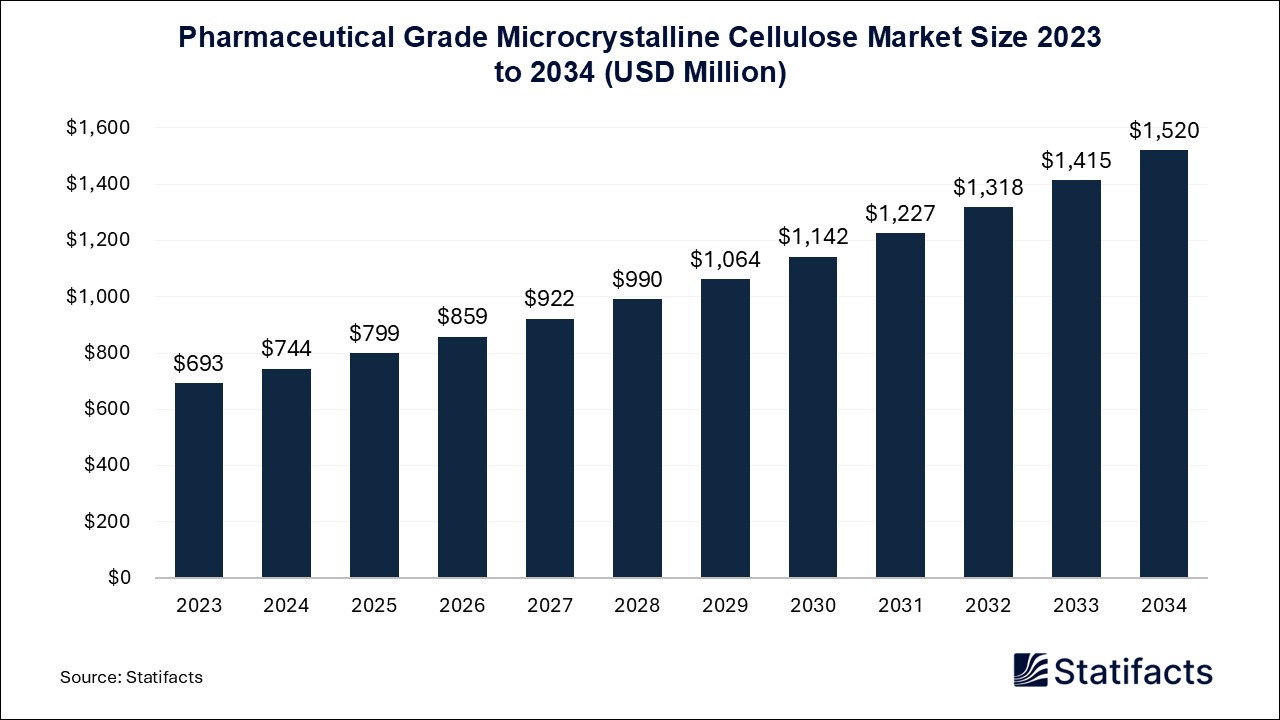

Our customers work more efficiently and benefit from
The tissue dissociation market size accounted for USD 318 million in 2024 and is expected to exceed around USD 899.69 million by 2034, growing at a CAGR of 10.96% from 2025 to 2034.
| Industry Worth | Details |
| Market Size in 2024 | USD 318 Million |
| Market Size in 2025 | USD 352.85 Million |
| Market Size by 2034 | USD 899.69 Million |
| Market Growth Rate from 2025 to 2034 | CAGR of 10.96% |
The tissue dissociation market refers to the production, distribution, and application of tissue dissociation which is the process of breaking down tissue or cell culture into individual cells, a critical step in preparing samples for research and therapeutic applications. Dissociation is also known as disaggregation, which involves the breaking down of a cell culture to acquire a small group. The tissue dissociation process is used in biomedical research and medical applications to prepare samples for analysis. There are three methods of tissue dissociation: chemical, enzymatic, and mechanical. There are many applications of tissue dissociation, including cancer research, vaccine development, single-cell sequencing, molecular biology, flow cytometry, and cell culture. Tissue dissociation systems are essential tools to facilitate single-cell analysis workflow in drug development, cell biology studies, and disease research.
Tissue dissociation can use enzymatic dissociation, mechanical dissociation, or a mixture of both methods to obtain primary cells from tissue. Mechanical dissociation is used when a tissue sample is crushed, cut, or homogenized/pulverized using an instrument to get the tissue into smaller, digestible pieces. Mechanical dissociation may be needed for tissues that have strong adhesion that is required to be broken down before a single cell can be extracted.
Mechanical disruption is a less harsh method of dissociation, in which a vortex or a pipette is used and can help disaggregate the cells from softer tissue with less physical force, enhancing viability and yield. Enzymatic dissociation, also called enzymatic digestion is used in tissue dissociation protocols and is essential for cell harvesting of primary cells and may result in the same extraction efficiency as mechanical dissociation. These beneficial factors of enzymatic dissociation and mechanical dissociation drive the growth of the tissue dissociation market.
Increased consumer preference for effective and non-invasive methods is driving the growth of the tissue dissociation market. Non-invasive methods are easier to use and are not associated with increased risk. Non-invasive procedures are important in healthcare due to they are routine parts of disease diagnosis, monitoring, and treatment. They allow information to get the information they need or treat diseases while causing a minimal amount of discomfort. Non-invasive procedures typically carry fewer risks than invasive surgeries.
Complications like infections, scarring, and anesthesia-related risks are significantly lowered. Enzymatic dissociation is an effective method for tissue dissociation which is used for more compact tissues that may have a high quantity of debris. Using enzymes can help reduce the amount of fibrous connective tissue, resulting in a higher yield of cells from organs like the liver. Trypsin is a serine protease commonly used for the detachment of adherent cell lines and dissociation of tissues.
Increased demand for personalized medicine driving the growth of the tissue dissociation market. There are many potential benefits of personalized medicines including facilitating drug discovery and development programs, contributing to the balance of the healthcare system, increasing the benefits of the medicines used, and minimizing the risk of drug toxicity. Personalized medicine has the potential to offer enhanced medication selection and targeted therapy, reduce adverse effects, increase patient compliance, shift the goal of medicine from reaction to prevention, enhance cost-effectiveness, and increase patient confidence post-marketing by approving new therapeutic strategies, and alter the perception of medicine in the healthcare system.
Advanced technologies in tissue dissociation are driving the growth of the tissue dissociation market. It is essential to obtain viable and intact cells, which is the first and most critical step in the tissue dissociation process. Advances in single-cell sequencing technology have significantly enhanced our understanding of health and disease. However, poor dissociation can compromise data accuracy and cell viability, limiting the full potential of this transformative technology. Methods of tissue dissociation to create single-cell suspensions from formalin-fixed tissue are helpful. Mechanical, chemical, and enzymatic multistep methods for separating single cells from tissue are very tissue-dependent.
According to a report published by the American Society of Gene and Cell Therapy, cell, gene, & RNA therapy landscape report,
Q2 2024 Quarterly Data Report, approved gene, cell, and RNA therapies,
Globally, for clinical use, 31 gene therapies are approved including genetically modified cell therapies, 30 RNA therapies have been approved, and 68 non-genetically modified cell therapies have been approved.
Published by Laxmi Narayan , March 2025
For any questions about this dataset or to discuss customization options, please write to us at sales@statifacts.com
| Stats ID: | 8052 |
| Format: | Databook |
| Published: | March 2025 |
| Delivery: | Immediate |
| Price | US$ 1550 |

| Stats ID: | 8052 |
| Format: | Databook |
| Published: | March 2025 |
| Delivery: | Immediate |
| Price | US$ 1550 |

You will receive an email from our Business Development Manager. Please be sure to check your SPAM/JUNK folder too.

Unlock unlimited access to all exclusive market research reports, empowering your business.
Get industry insights at the most affordable plan
Stay ahead of the competition with comprehensive, actionable intelligence at your fingertips!
Learn More Download
Download

